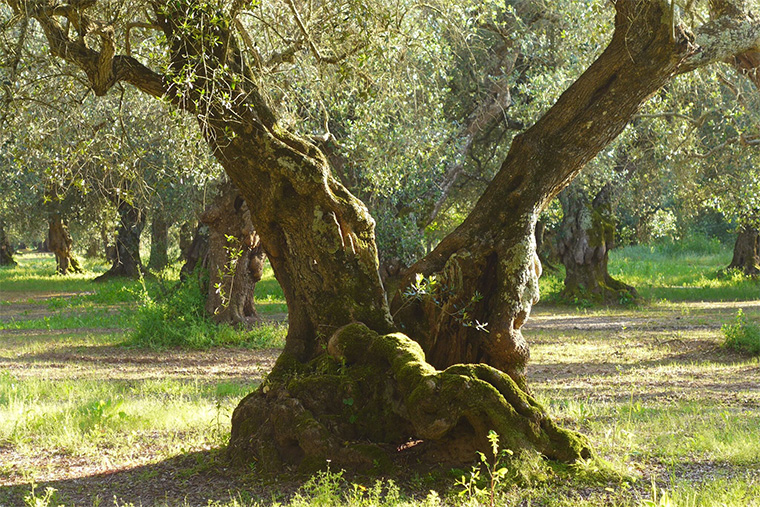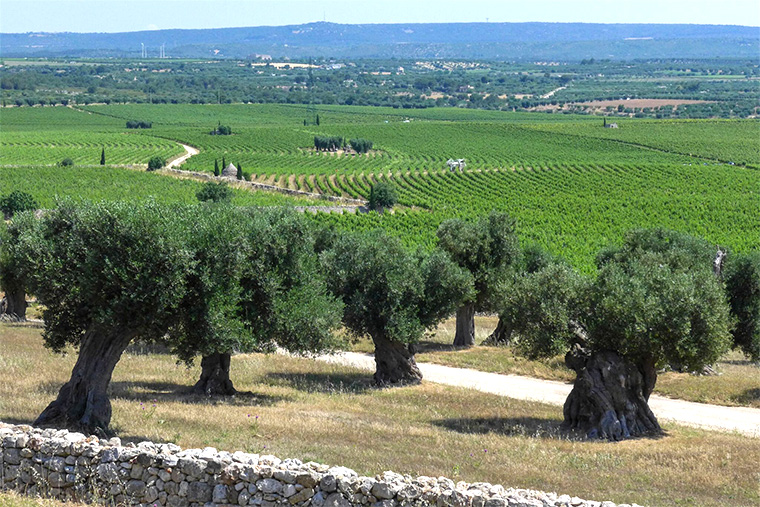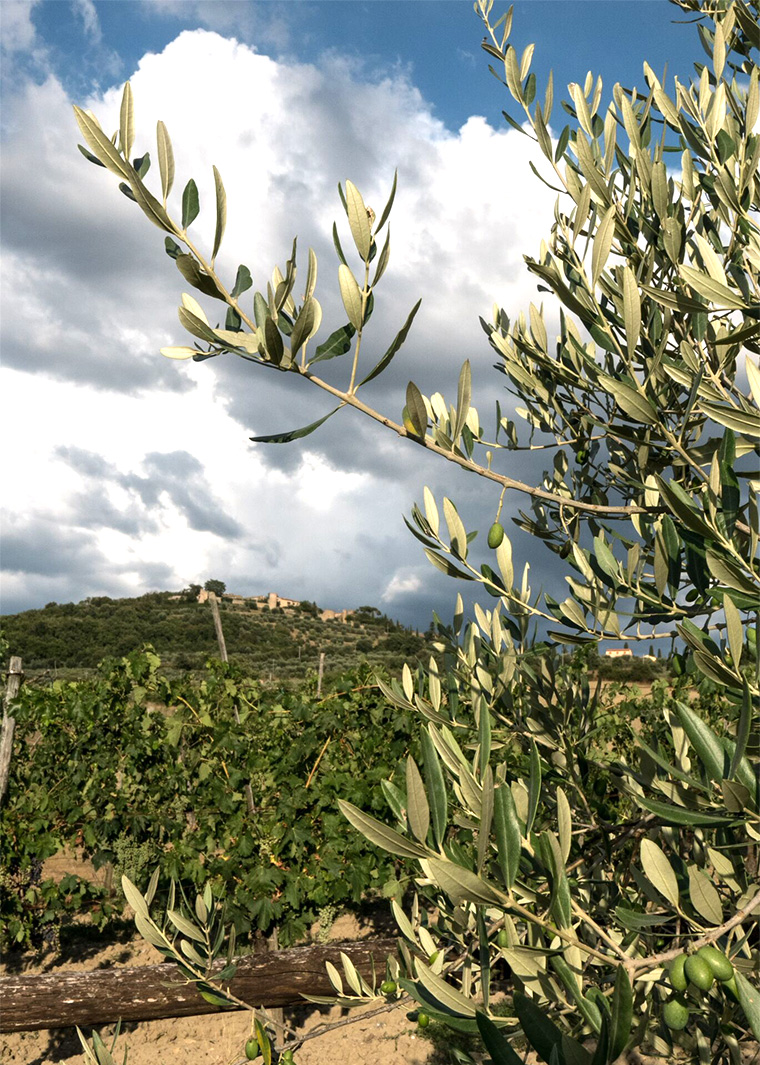Olive oil lovers are glad to put the old year behind them. Between drought and disease, the 2014 olive harvest was catastrophic for Italy—the worst in twenty years, according to the International Olive Oil Council. Everywhere I traveled throughout the central and southern regions this past summer and fall, producers and consumers alike were praying for friendly weather and a better yield this year.
The good news is that the 2015 harvest was better than the previous year’s (though not as bountiful as the year before that—2013 saw the best olive harvest of all time). The not-so-good news is that prices for genuine, estate-bottled Italian olive oil are higher, good reason for the public to be better informed than ever about the oils they are buying. Most American consumers, home cooks and food professionals alike, typically have more savvy about buying a bottle of wine than a bottle of olive oil.
Italian Olive Oil, A Crash Course
Olive trees, transplanted to Italy by Etruscans migrating from the Levant, carpeted Italy’s Mediterranean regions some six millennia before the Romans invaded. Like bread and wine, olio d’oliva, or simply, olio, is a primordial food, imbued with symbolic meaning and religious significance in the imaginations and mythologies of the Italians.

Italy’s deep south—Puglia, Calabria, and Sicily—were once the world’s leading purveyors of olive oil, producing it in such volume as to light the street lamps and churches of Europe. The advent of electricity in the late 19th century changed all that, devastating the Italian olive oil market and forcing producers to clear-cut their ancient trees and replace them with more promising cash crops.
In the last century, olivicoltori planted new olive trees and influenced regulations that put emphasis on quality over quantity. If previous generations geared their olive oil production toward volume of output for foreign markets at the expense of taste, today’s artisan olive oil producers are making some of the best olive oils in the world and it is these you should be looking for as the new oils arrive.
The Real Deal: Genuine Extra-Virgin
There is only one kind of genuine olive oil that qualifies by Italian law as extra virgin: the juice of the olive fruit that is extracted by pressing, not by chemical extraction, and which does not exceed 0.8% acidity. Anything else—so-called oils seductively labeled “pure olive oil,” and “lite olive oil” for the American market—are not genuine olive oil and have no place in the authentic Italian kitchen.
When “Bitter” is Good
Unlike wine, which requires aging, olive oil is at its best just after the fruit is pressed, when it is fresh and brimming with flavor and pleasant bitterness—amaro to the Italians. That bitterness, which may put off the uninitiated, is the indicator of high polyphenol levels (antioxidants) associated with excellent olive oil, in particular, young, early harvest oil. That same bitterness brings out the flavors in other ingredients, much in the way salt functions to draw out and define the characteristic flavors of foods in cooking. So-called extra-virgins that taste bland may be blends of extra-virgin oil cut with refined oil, an illegal, if common, practice in the slippery business of olive oil, as detailed in the now famous New Yorker exposé in 2007 by investigative journalist Tom Mueller.

Best Uses for Extravergine
True extra-virgin olive oil is best used as a finishing oil over minestrone or bean soups, polenta, certain pastas, or over grilled meat or fish; as a condiment for cooked vegetables; as a component in uncooked dressings for fish and meat such as salsa verde; or simply drizzled over sturdy bread or vine-ripened summer tomatoes and freshly made mozzarella. One of my greatest pleasures in summer is enjoying the simple bread salad of Puglia made from dampened whole-grain friselle, a kind of hard-tack cracker, and sweet, ripe tomatoes anointed with good wine vinegar and the full-bodied extravergine of Puglia.
Which Oil Not To Buy?
Many commercial brands olive oils have been adulterated or blended with other oils from abroad. Others are blends from various growers that lack the distinctiveness of artisan-produced, estate-bottled olive oils. In addition, according to experts, mass-produced and blended olive oil is already rancid, whether because the olives were left on the trees to ripen for too long (more profitable—late harvest olives produce more volume than early harvest olives), or because the oil has been on a shelf for too long (the typical shelf life of olive oil is about a year if it is bottled properly in dark glass or well sealed tins (olive oil sold in plastic bottles should be avoided altogether). Not only does oxidized olive oil taste bad, it is harmful to human health (rancid oil forms free radicals in the body, which are known to cause cellular damage associated with serious diseases).

Seize the Moment
The new vintage arrives in American markets in January, so now is the time to buy the most delicious oil you will taste for the rest of the year. Look for the production date of October or November 2015, on the label. The best guarantee of getting fresh, high quality, genuine extra-virgin olive oil is to stick with labels that include the coveted D.O.P. seal, a designation conferred by the European Union that essentially guarantees its quality, geographical origin, producer, the variety of olive used, date of production and other details that distinguishes it from other oils. As olive oil ages, its flavor and vitality fades. Light and heat will cause it to deteriorate quickly. Buy it is small quantities from reliable purveyors where merchandize moves quickly and store it in a cool (not refrigerated), dark place and use it often.
Recommended Sources
There are numerous American retailers of fine extra-virgin olive oil. Among those I would recommend that you can find online include Zingermann’s in Ann Arbor, Michigan (www.zingermans.com), Gustiamo in New York City (www.gustiamo.com), of Di Palo Fine Foods in New York City (www.dipaloselects.com), and Market Hall Foods in Oakland, CA (www.markethallfoods.com). These purveyors are knowledgeable about olive oil and typically have personal relationships with the artisans whose products they sell.
Julia della Croce is a food writer and James Beard award-winning cookbook author and recipe developer based in New York. She is presently incubating a book about her family’s ancestral region, Sardegna. Visit her website, www.juliadellacroce.com and blog, http://juliadellacroce.com/forktales1/, connect on Facebook: Julia della Croce – chef & foodwriter, Twitter: @juliadellacroce and Instagram: juliadellacroce.




























